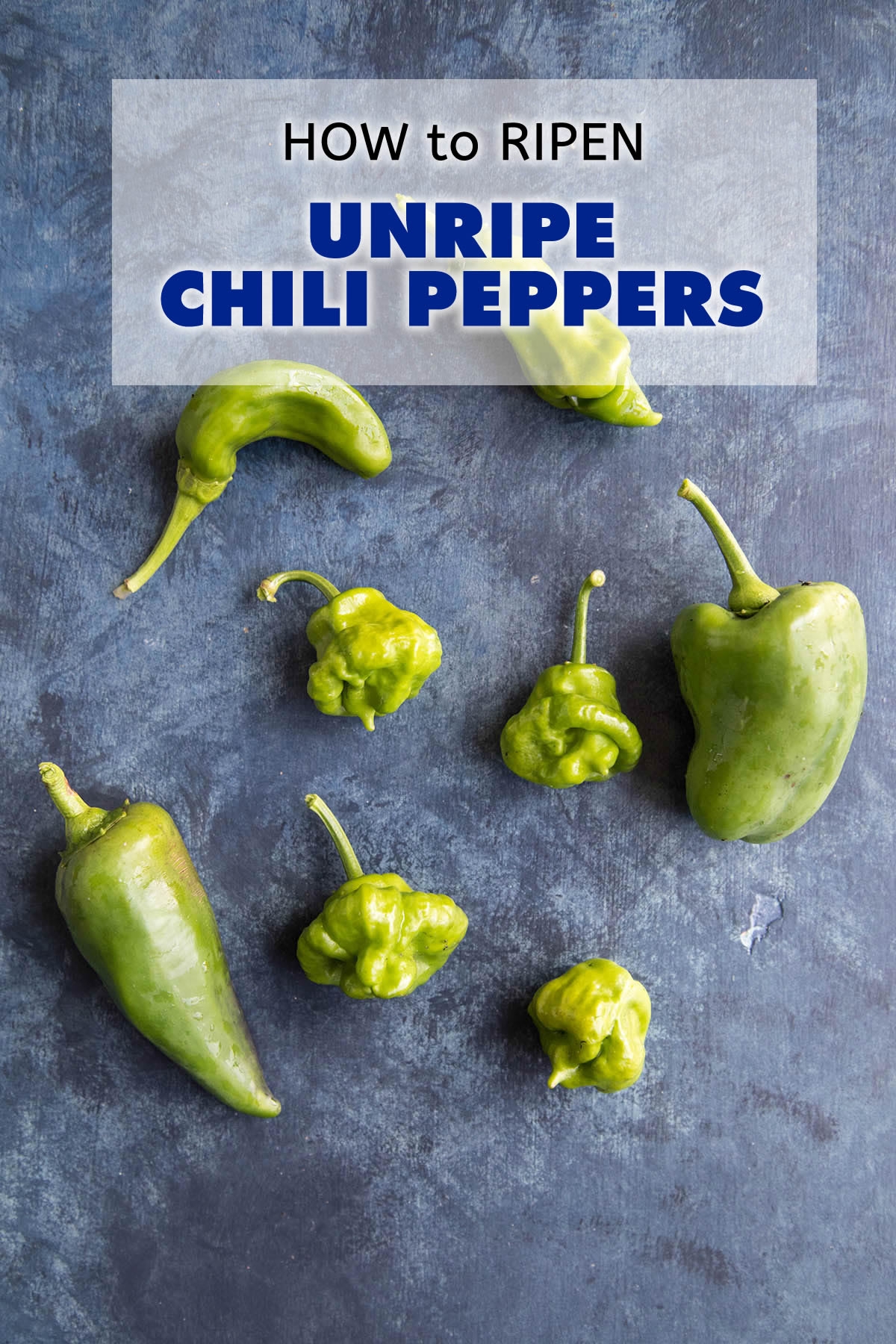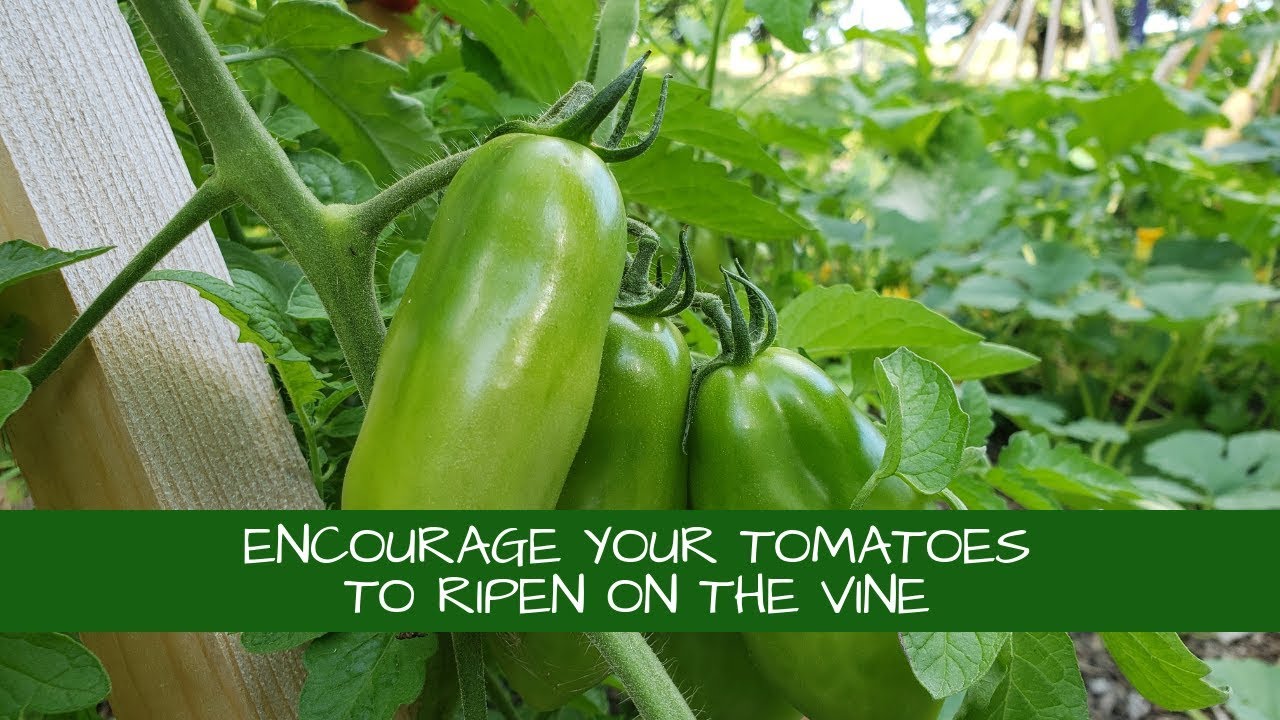To encourage peppers to ripen on the vine, provide ample sunlight, maintain proper watering, and prune the plant as needed. Are you eager to see your peppers turn from green to vibrant red on the vine?
Many gardeners find joy in watching their crops reach their full potential. However, achieving optimal ripening can sometimes be a challenge. We will explore effective ways to encourage peppers to ripen on the vine. By providing ample sunlight, maintaining proper watering, and pruning the plant as needed, you can help your peppers reach their desired color and flavor.
Whether you are a seasoned gardener or a beginner, these tips can help you achieve the perfect harvest of delicious, ripe peppers.

Credit: www.chilipeppermadness.com
Understanding The Factors Affecting Pepper Ripening
Ripening peppers on the vine can be a rewarding experience for gardeners. To ensure successful ripening, it is essential to understand the various factors that can influence the process.
External factors play a significant role in pepper ripening. Temperature is a crucial determinant, as peppers require warm weather to thrive. *Proper sunlight exposure* is equally important, as it aids in the production of chlorophyll and the subsequent ripening of the fruit. Additionally, humidity levels should be moderate, as excessively dry or humid conditions can hinder ripening.
On the other hand, internal factors also affect pepper ripening. The stage of maturity at which the pepper was harvested is vital, as peppers will continue to ripen if picked at the appropriate time. Moreover, the pepper variety itself plays a role, as different cultivars have varying ripening times.
By understanding the external and internal factors influencing pepper ripening, gardeners can take the necessary steps to encourage optimal ripening on the vine. With the right conditions and careful monitoring, gardeners can enjoy a bountiful harvest of fully-ripened peppers.
How to Encourage Peppers to Ripen on the Vine: Step by Step Guide
Providing The Optimal Growing Conditions For Pepper Ripening
Choosing the correct pepper varieties is crucial for promoting successful ripening on the vine. Opt for varieties that are known for their ability to ripen well on the plant. Some popular options include Bell peppers, Jalapenos, and Cayenne peppers.
Peppers require abundant sunlight to ripen properly. Plant them in an area that receives at least 6 to 8 hours of direct sunlight every day. **Ensure the peppers are not overshadowed** by taller plants or trees which can hinder their sun exposure.
Peppers thrive in warm temperatures, ideally between 70-90°F (21-32°C) during the day and above 60°F (15°C) during the night. **Avoid exposing them to extreme temperature fluctuations**, as this can negatively impact the ripening process.
Implementing Effective Techniques To Encourage Pepper Ripening
Pruning is a key technique to encourage pepper ripening. By removing excess foliage and non-productive branches, you can redirect the plant’s energy towards fruit development. Focus on removing lower leaves and branches and those that are shading the peppers. This will improve air circulation and sunlight exposure, which are crucial for ripening. Remember to only prune when needed and avoid excessive trimming that may stress the plant.
Proper watering is essential for optimal pepper ripening. Ensure that the plants receive consistent moisture, but avoid overwatering as it can lead to fruit rot and lower yield. It is recommended to water deeply once or twice a week, allowing the soil to dry slightly between waterings. Mulching around the plants can help retain moisture in the soil and prevent weeds, optimizing the growing conditions.
Providing the right nutrients is vital for pepper ripening. Peppers are heavy feeders, so ensure they receive a balanced fertilizer with a higher phosphorus and potassium content. These nutrients promote flowering, fruit development, and ripening. Apply the fertilizer according to the package instructions and monitor the plant’s response. Additionally, organic matter such as compost can enrich the soil, providing a steady supply of essential nutrients throughout the growing season.
Overcoming Common Challenges In Pepper Ripening
When it comes to ripening peppers on the vine, there are some common challenges that gardeners often face. In cool climates and areas with short growing seasons, **encouraging peppers to ripen** can be a bit challenging. The low temperatures and limited sunlight can slow down the ripening process. However, there are a few tricks you can use to help your peppers reach their full potential.
Dealing with Cool Climates and Short Growing Seasons: In such conditions, it is important to choose pepper varieties that are known for their early maturity. Look for varieties that have a shorter time to harvest listed on the seed packet or plant label. This way, you can ensure your peppers have enough time to fully ripen before the frost sets in. Additionally, using row covers or cloches can provide some extra warmth and protect the plants from chilly winds.
Addressing Pests and Diseases Affecting Ripening: Pests and diseases can also interfere with the ripening process of peppers. To prevent this, make sure to regularly inspect your plants for any signs of infestation or disease. If you notice any issues, take appropriate measures such as applying organic pesticides or removing infected fruits. Maintaining good garden hygiene, such as cleaning up fallen debris and pruning diseased parts, can also help reduce the risk of pests and diseases.
Troubleshooting Common Ripening Issues: If you encounter common ripening issues like **slow ripening** or uneven ripening of peppers, there are a few solutions. First, ensure that your peppers are receiving enough sunlight by pruning any excessive foliage that may be shading the fruits. Second, avoid over-watering, as excessive moisture can lead to poor ripening. Finally, you can try applying a foliar spray with *ripening enhancers* to speed up the process. Just make sure to follow the instructions carefully to prevent any damage to the plants.
Harvesting And Storing Ripe Peppers
Knowing the optimal harvest time is crucial when it comes to encouraging peppers to ripen on the vine. Harvesting too early can result in under-ripe and flavorless peppers, while waiting too long can lead to over-ripeness and a loss of crispness. To ensure the best results, follow these proper techniques for harvesting peppers:
- Pick peppers when they have reached their mature size and have developed vibrant colors.
- Gently twist or snip the pepper stem to detach it from the plant.
- Avoid pulling or yanking the peppers, as this may damage the plant.
- Store the harvested peppers in a cool and well-ventilated area to maintain their freshness and quality.
When preserving and storing ripe peppers, keep the following tips in mind:
- Wash and dry the peppers thoroughly before storing to prevent rot or mold.
- Choose a suitable storage method, such as freezing, canning, or dehydrating, based on your preferences.
- If freezing, slice or chop the peppers into the desired shape and size before placing them in freezer bags or containers.
- Label and date the stored peppers for easy identification.
Exploring Additional Strategies And Techniques
When it comes to encouraging peppers to ripen on the vine, there are additional strategies and techniques you can explore. One method is utilizing natural ripening agents, which can help speed up the ripening process. Some examples of natural ripening agents include ethylene gas, which is produced by fruits like apples and tomatoes, and can be used to stimulate pepper ripening. Another technique is ripening peppers off the vine.
You can do this by carefully cutting the pepper from the plant when it reaches the desired size and color, and then storing it in a warm and dry location. Additionally, you can extend the ripening season by utilizing greenhouses. Greenhouses provide a controlled environment with optimal temperature and humidity levels for pepper plants, allowing them to continue ripening even as the outdoor growing season ends.
Frequently Asked Questions Of How To Encourage Peppers To Ripen On The Vine
How Do You Encourage Peppers To Ripen On The Vine?
To encourage peppers to ripen on the vine, make sure they receive adequate sunlight, provide regular watering, and avoid over-fertilizing. You can also remove any extra flowers or fruit to allow energy to be directed towards ripening. Harvesting always encourages the plant to produce more peppers, so don’t be afraid to pick a few green ones.
What Are The Signs That Peppers Are Ripe?
When peppers are ripe, they will have vibrant colors, a glossy appearance, and feel firm to the touch. Depending on the variety, they may turn red, yellow, orange, or even purple. Peppers that are fully ripe will also have a sweet aroma.
Harvest them before they become soft or start to wrinkle.
Is It Better To Leave Peppers On The Vine To Ripen?
Generally, it is better to leave peppers on the vine to ripen as they will develop better flavor and improved sweetness. However, if there is a risk of frost or the growing season is ending, you can pick the peppers when they have reached their mature size.
They will continue to ripen off the vine, although the flavor might not be as robust.
Can You Eat Green Peppers That Did Not Ripen?
Yes, you can eat green peppers that did not ripen. While they may not have the same level of sweetness as ripe peppers, they still have a mildly bitter flavor and can be used in various recipes. If you prefer a milder taste, you can remove the seeds and ribs, as they contribute to the pepper’s spiciness.
Conclusion
By following the right practices, you can encourage your peppers to ripen on the vine successfully. Remember to provide ample sunlight, optimize soil conditions, and offer adequate water and nutrients. Pruning and proper plant care are also crucial factors. With patience and attention to detail, you can enjoy a bountiful harvest of ripe, flavorful peppers straight from your garden.
Happy gardening!

